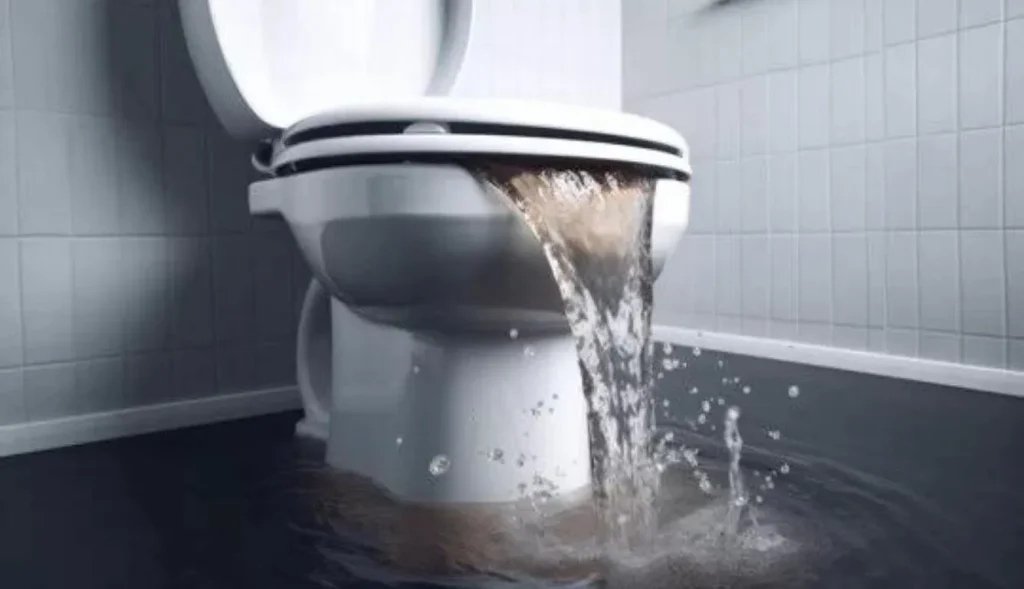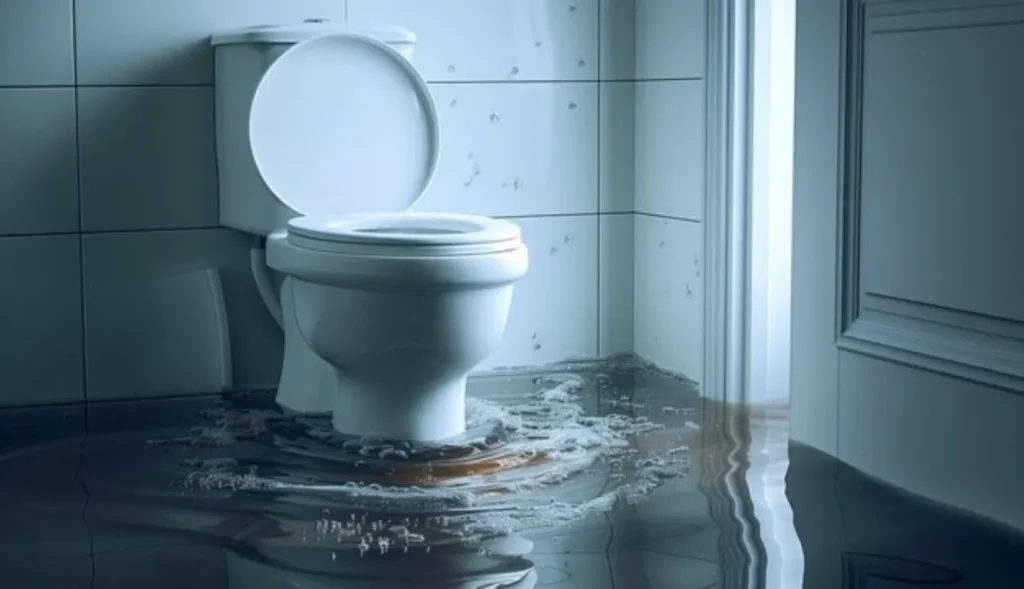Introduction
Toilets overflowing is one of the most frustrating plumbing problems a homeowner can face. While it might seem like a minor inconvenience at first, it can quickly escalate into a significant issue, causing damage to floors, walls, and even ceilings if left unchecked. The good news is that toilet overflows are preventable in many cases, especially if you know the common causes and how to fix them. In this article, we’ll dive deep into why toilets overflow, what you can do to prevent it, and when it’s time to call a professional.

How a Toilet Works
Before we can understand why a toilet overflows, it helps to have a basic understanding of how toilets work. Toilets are relatively simple devices, consisting of a bowl, a tank, and a flushing mechanism. The flushing process involves water flowing from the tank into the bowl, which carries waste into the drain and through the plumbing system. The water in the bowl is then refilled, and the process resets.
Flushing Mechanism Explained
When you flush the toilet, a handle lifts a flapper valve in the tank, allowing water to flow from the tank into the bowl. This water pushes waste through the drainpipe. Once the tank empties, the flapper valve closes, and the fill valve refills the tank for the next flush.
Common Causes of Toilet Overflows
Now that we understand how a toilet works, let’s look at the most common reasons it may overflow. Overflows generally happen when something disrupts the normal flushing process, causing water to back up or continue filling the toilet bowl.
Blockages in the Toilet Drain
One of the most common reasons for an overflowing toilet is a blockage in the drain. Clogs can occur when too much toilet paper, foreign objects, or waste obstructs the flow of water. As a result, water cannot pass through, leading to an overflow.
Blocked Plumbing Vents
Plumbing vents play a crucial role in preventing toilets from overflowing. These vents allow air to flow through the plumbing system, helping water and waste to flow freely. If the vent becomes blocked (often by debris or animals), it can cause pressure imbalances that result in overflows.
Malfunctioning Fill Valve
The fill valve controls the flow of water into the toilet tank. If this valve malfunctions, the tank may overfill, causing water to spill into the bowl and overflow. This is a common issue, especially in older toilets.
Problems with the Float Mechanism
The float mechanism is responsible for regulating the water level in the tank. If the float becomes stuck or misaligned, it can cause the tank to fill beyond its intended capacity, leading to overflows.
Signs That Your Toilet May Overflow
Often, there are warning signs before a toilet overflows. If you know what to look for, you can address the issue before it becomes a disaster.
Slow Draining Toilet
If the water in your toilet bowl drains slowly after flushing, this could be a sign of a partial blockage in the drain.
Gurgling Sounds
Gurgling sounds coming from your toilet may indicate an issue with the plumbing vent. This is a sign that air isn’t flowing properly through the system, which could lead to an overflow.
Water Rising to the Brim
If you notice water rising dangerously close to the brim of the toilet bowl after a flush, it’s a clear sign that something is wrong. You may have a blockage or another issue preventing proper drainage.
How to Prevent Toilet Overflows
Preventing toilet overflows is all about proper maintenance and being mindful of what you flush down the toilet. Here are some tips to help you avoid an overflow.
Regular Maintenance Tips
Regularly inspect your toilet’s flushing mechanism, fill valve, and float to ensure they’re functioning properly. Cleaning your plumbing vents and checking for leaks can also help.
Proper Flushing Practices
Never flush items that shouldn’t go down the drain, such as wipes, feminine hygiene products, or excessive amounts of toilet paper. These can cause clogs and lead to overflows.
When to Call a Plumber
While minor toilet overflows can often be fixed with a plunger or auger, some situations require professional help.
Signs It’s Time to Call a Plumber
If you’ve tried to fix the issue on your own and the toilet continues to overflow, or if you’re dealing with recurring blockages, it’s best to call a plumber.
Why DIY Fixes May Not Always Work
DIY fixes can sometimes address the symptoms of a problem without solving the root cause. A plumber has the expertise to diagnose and fix the issue properly.
FAQs
What should I do if my toilet overflows constantly?
Constant overflows may indicate a deeper plumbing issue. It’s best to call a plumber to diagnose and fix the problem.
Can a toilet overflow without being clogged?
Yes, issues like a malfunctioning fill valve or blocked plumbing vent can cause a toilet to overflow without a clog.
How can I tell if my toilet’s fill valve is broken?
If your toilet tank overfills regularly, or the water doesn’t stop running after a flush, the fill valve may be faulty.
Is it safe to use chemicals to unclog a toilet?
While chemical drain cleaners can sometimes clear minor clogs, they can also damage your pipes over time. It’s better to use a plunger or auger.
How often should I inspect my toilet’s plumbing?
It’s a good idea to inspect your toilet’s plumbing at least once a year or whenever you notice any issues.

Conclusion
Toilet overflows can be stressful, but they’re often preventable with regular maintenance and proper flushing habits. By understanding the common causes, you can take steps to prevent future overflows and avoid costly repairs.


Congratulation!